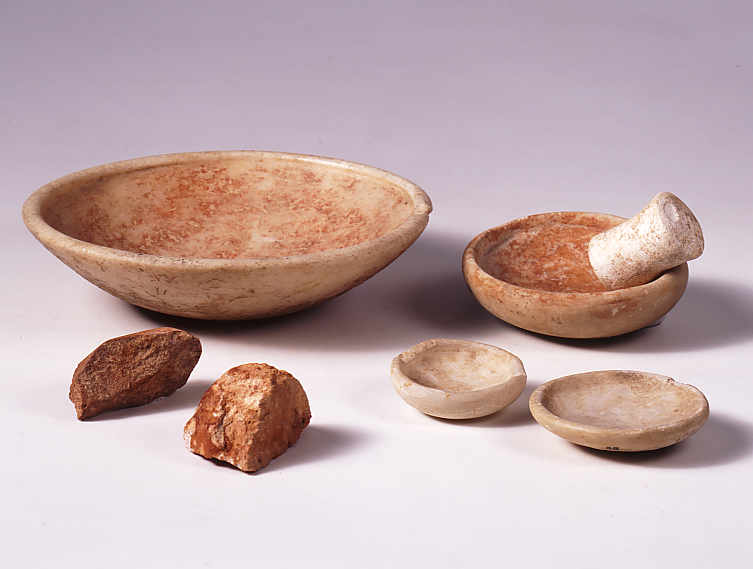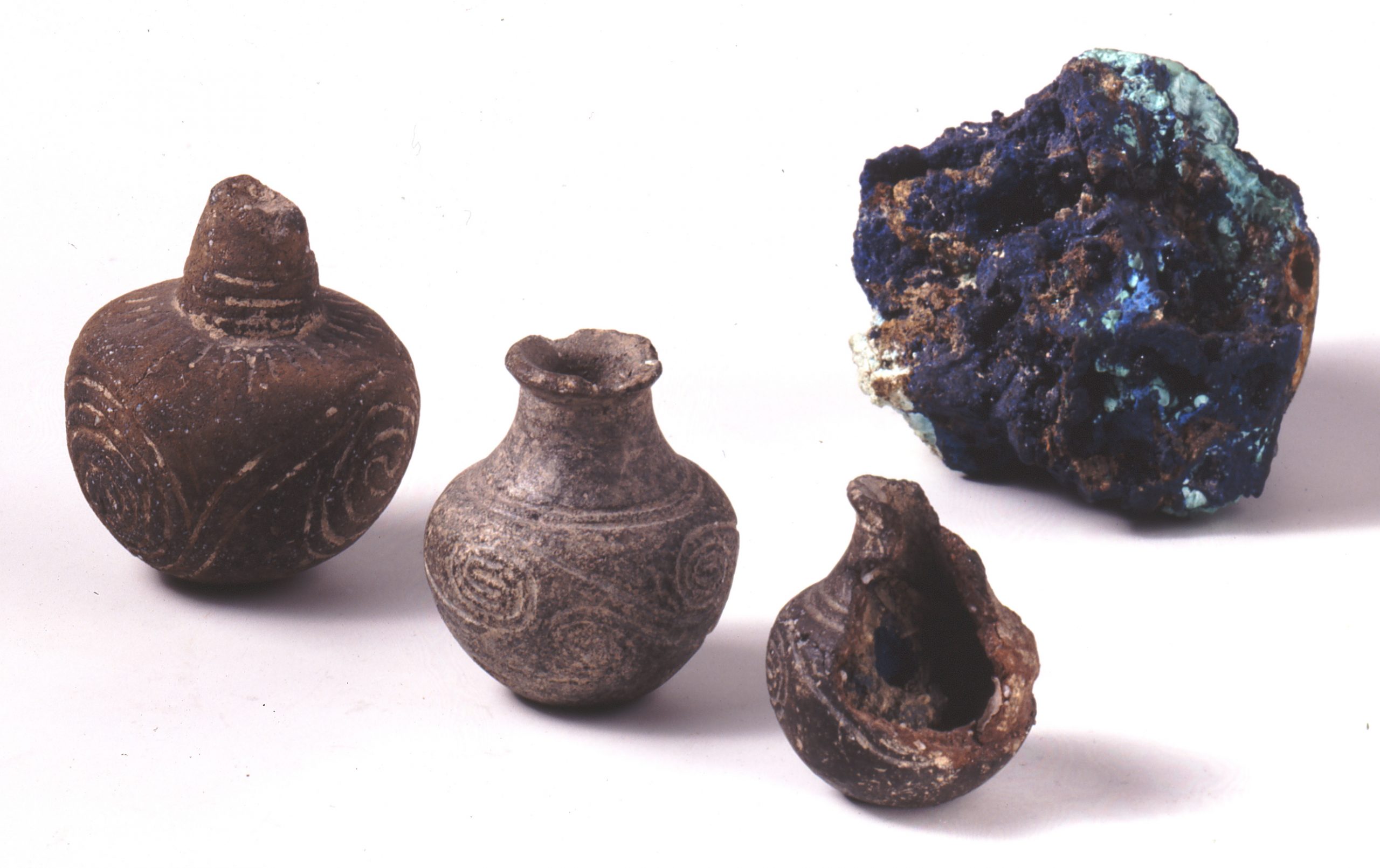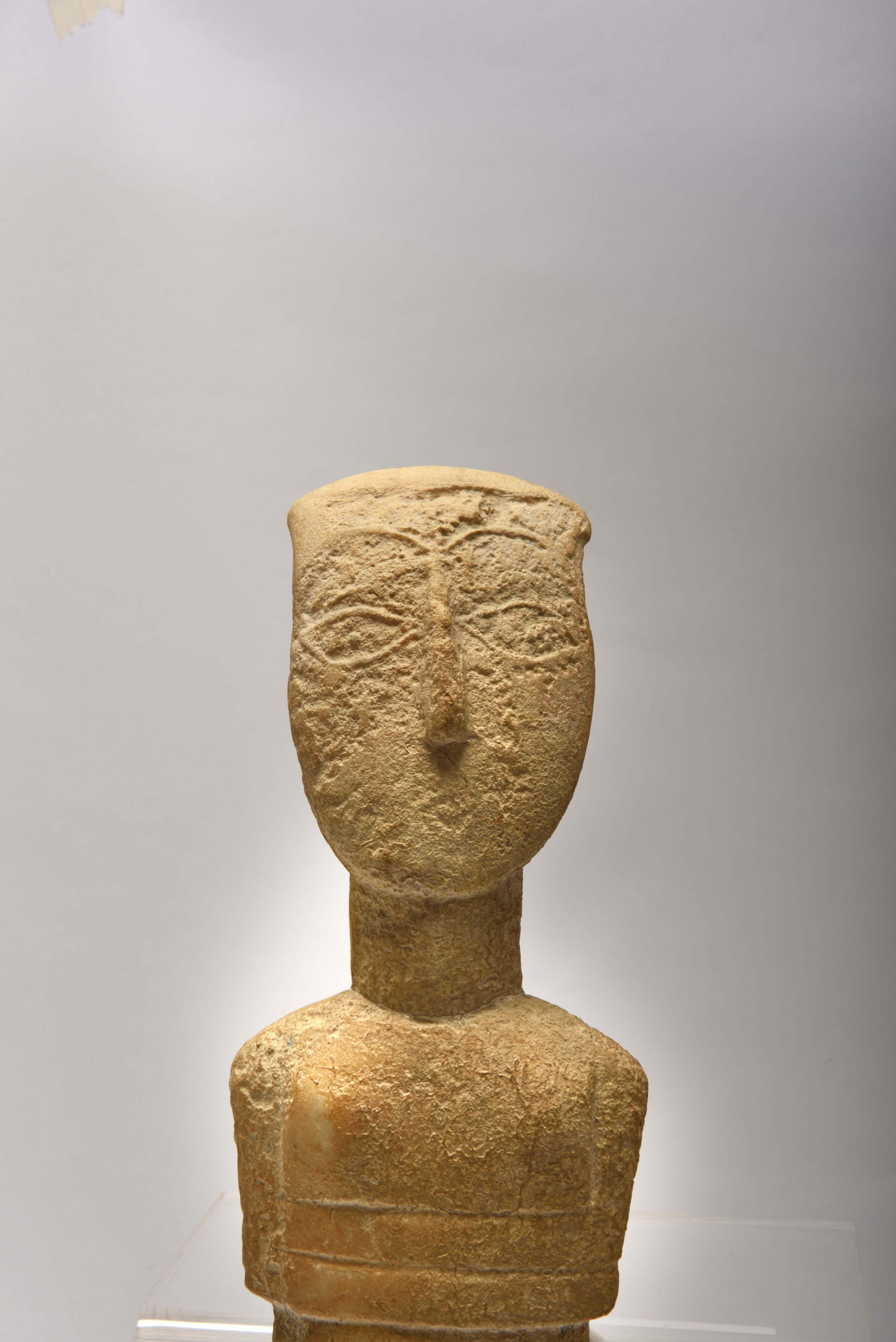The use of colour in Cycladic Art
CYCLADIC ART

COLOUR IN CYCLADIC ART
Traces of colour have been preserved on a wide variety of artifacts – namely marble figurines and vessels, clay vases, and bone tools. A detailed study of such uses of colour is possible through traditional methods, chemical analysis, and ultra-violet photography.
Red and blue were the most common colours used by Cycladic artists; green and black were also used, but less frequently. All colors were produced from different natural minerals, such as:
- Red from iron oxides (hematite), red ochre, or cinnabar (mercury sulfide – which is not native to the Aegean and was probably imported from Asia Minor or the Balkans)
- Blue from azurite (copper carbonate)
- Green from malachite or hydroxide of azurite
- Black was probably produced by the oxidization of another mineral, possibly azurite
COLOUR AND VESSELS

The preservation of pigments on the inside of bowls is a quite common phenomenon. While the most commonly found colour is red, deep blue, black, and green are also present, though less frequently. Often, the inner surface of the bowl was covered by a solid layer of paint. In most cases, it seems that vessels were either intentionally coloured for symbolic purposes or full of pigment when they were placed in the grave.
On the other hand, when the inner surface of a vessel shows only traces of paint in some places, it seems that the bowl may have been used for grinding colorants (“palette”). This theory is supported by the fact that, occasionally, bowls were found with stone objects – which are interpreted to be stone pestles, on which traces of mainly red or blue colour are also preserved.
There are also examples of marble spouted bowls that were found to contain pigments, suggesting that, in some cases, at least, these objects were used for the ritual offering of paint in liquid form. Marble or – usually – concave bone palettes with traces of colour were probably used like bowls for pigment preparation. Several marble kylikes also depict traces of red, dark blue, and/or green on the inside, indicating that they too were used to mix pigments.
Apart from the types above, the use of pigments in the Early Cycladic period is also demonstrated by marble pyxides (vessels with lids used to keep small objects or substances), bone tubes, seashells, and clay aryballoid vessels with preserved traces of pigments. This led scholars to believe that such objects may have been used for storing and transporting pigments (a kind of paint-box).
COLOUR AND FIGURINES
Despite the seeming whiteness of marble figurines, many of them had originally been decorated with bright colours; though, the use of colour on figurines is not always easy to attest. In some cases, there are clear, visible remains on the marble. More often, however, the only trace is a “paint ghost” – or a smoother part of the surface or the outline of a painted feature (e.g., an eye, a diadem) that looks as if it has been rendered in low relief.
In fact, the pigment applied in those areas protected the marble surface from the erosion suffered by the rest of the figurine and appears today to be smooth, lighter in colour, and slightly raised in comparison to the uncolored areas.
Black and blue pigments were normally used to define or emphasize anatomical details of the head and body – such as the eyes, eyebrows, hair, and pubic triangle. Red was also used to emphasize incised details and depict ornaments (necklaces, bracelets), power or status attributes (diadems, bands), and various decorative motifs on the face and body. The ears, mouth and nostrils were usually left unpainted.
THE INTERPRETATION OF PAINTED DECORATION
The interpretation of the abstract motifs that were painted on several figurines is a contested issue. Some scholars believe that they represented instances of body piercing or paint – meant for particular social or ritual occasions. Others believe that they were symbols of status. According to another theory, the painted decorations were meant to express different attributes of the represented figure. It has even been theorized that they functioned as characteristic symbols of a common cultural or social identity. This wide range of approaches should not come as a surprise, since the study of painted motifs on Cycladic figurines is still at an early stage.
We should stress that most of the painted figurines belong to the so-called “canonical” type of the Early Cycladic II period (2700 – 2400/2300 BC). Although, we have seen instances of colored decoration in earlier types, too – mainly the violin-shaped figurines and a few examples from the Plastiras and Louros types. The practice seems to have died out during the final stages of Early Cycladic II – when the colour gives way to relief decoration.



